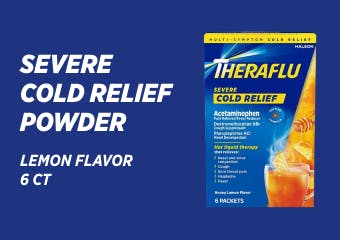When Do I Have a Fever?
There’s some debate about this, but the CDC considers 100.4 degrees Fahrenheit as where a fever begins for adults. Normal body temperature is 98.6 degrees Fahrenheit, but there can be slight variations in temperature depending on clothing, environment, time of day and even menstrual cycle. In general, your body temperature tends to be lowest in the morning and highest at night.
Fevers from infections like the flu, if temperatures are slightly above normal (99.6 degrees to 100.3 degrees Fahrenheit), can be considered low-grade. It’s also important to know that younger people often have higher temperatures than older people, so it’s possible you might not develop much of a fever if you’re older, despite an infection being present.1,2
If you have a fever, your symptoms also might include:
- sweating
- shivering or chills
- headache and muscle aches
- not being hungry
- breaking out in a rash
- restlessness or irritability
- feeling weak, tired or confused.2,3
Why Do Fevers Happen?
Fevers are your body’s reaction to illness. In fact, it comes directly from your immune system’s responses to fighting off the bacteria or virus causing you to feel sick. Infections in your body create temperature-raising toxins called pyrogens, and they’re what elevates your temperature. They release chemicals called prostaglandins, which are part of the inflammatory response to infection and tell your brain to raise the body temperature. Doctors think that this rise in temperature also creates an uncomfortable environment for the microorganisms, one where they cannot survive for long, and helps your body eventually overcome whatever’s making it feel bad.2,4 Because of this immune response, it’s occasionally possible for medications like antibiotics and blood pressure medications to cause a fever, and you can sometimes spike a fever in response to a vaccine.2
How Can I Reduce My Fever?
Before you reach for medication, know that some doctors and scientists are beginning to think that letting a fever cool naturally is actually smart, particularly for low-grade fevers.2 In some studies, letting a fever resolve with minimal or no treatment shows no difference or even improved outcomes.5 But we know fevers are uncomfortable, so reducing a fever might make sense in order to help you properly rest up and get better soon. Here’s some ways to bring down that temperature, or at least be more comfortable while you wait for it to break:
- Drink fluids. You’re warmer than you used to be, so it’s easier to get dehydrated, and the extra fluids can help cool you as well.
- Rest! Your body is already tired from fighting infection: help it work by giving it space to take care of itself.
- To keep up your strength, eat foods that are easy to digest but light on the stomach.
- Try putting damp washcloths on your wrists or forehead to lessen the sensation of overheating, or even take a quick bath in warm water. (Cold water will ultimately raise your body temperature since your body will try to get warm again, so keep it lukewarm at coolest.)
- Even if you’re shivering, dress lightly to help your body get rid of those excess degrees. You wouldn’t wear a parka in the summer, so try to keep your clothing and blankets down to help with the cooling process.
- You can lower your body temperature and ease those feverish aches and pains with over-the-counter medications like Theraflu. The ingredients in Theraflu, like acetaminophen, can help reduce temperature and relieve pain, making it easier to get a good night’s sleep or rest during the day. 2,3
When Should I Be Worried About My Fever?
Most fevers will go away on their own or with the help of over-the-counter treatments, but call your doctor if:
- Your fever is accompanied by a stiff neck, trouble breathing, severe pain or swelling, seizures, confusion, loss of consciousness, or urine or vaginal discharge that is painful, discolored, or smells bad.
- Your fever goes above 104-105 degrees Fahrenheit and doesn’t come back down.
- Your fever doesn’t improve with medication.
- Your fever is lasting more than 72 hours.
These could be signs of more serious conditions that require prompt or increased treatment. 2,3 But for temperatures caused by colds or the flu, Theraflu will be your friend in bringing that fever down and helping you feel more like yourself again.





